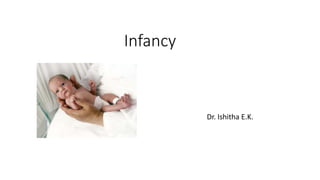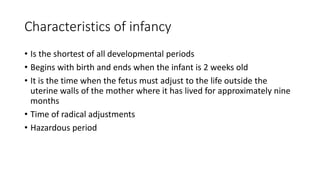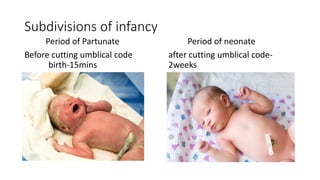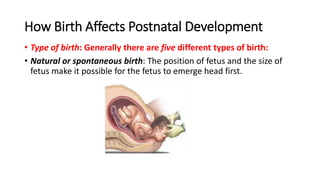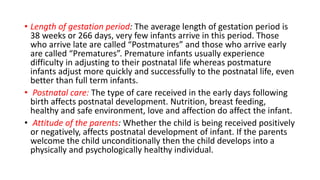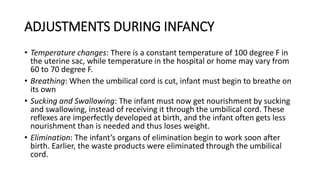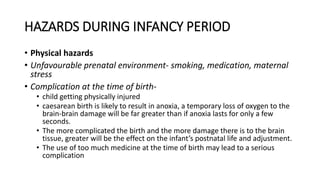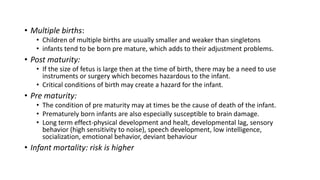This document discusses infancy development from birth to 2 weeks old. It notes that infancy is the shortest developmental period but involves major adjustments as the fetus transitions to life outside the womb. Factors like type of birth, prenatal environment, gestation period, and parental care all affect this adjustment period and can pose physical or psychological hazards. The document outlines characteristics of newborns and the physiological changes they undergo like temperature regulation, breathing, sucking, and elimination.
